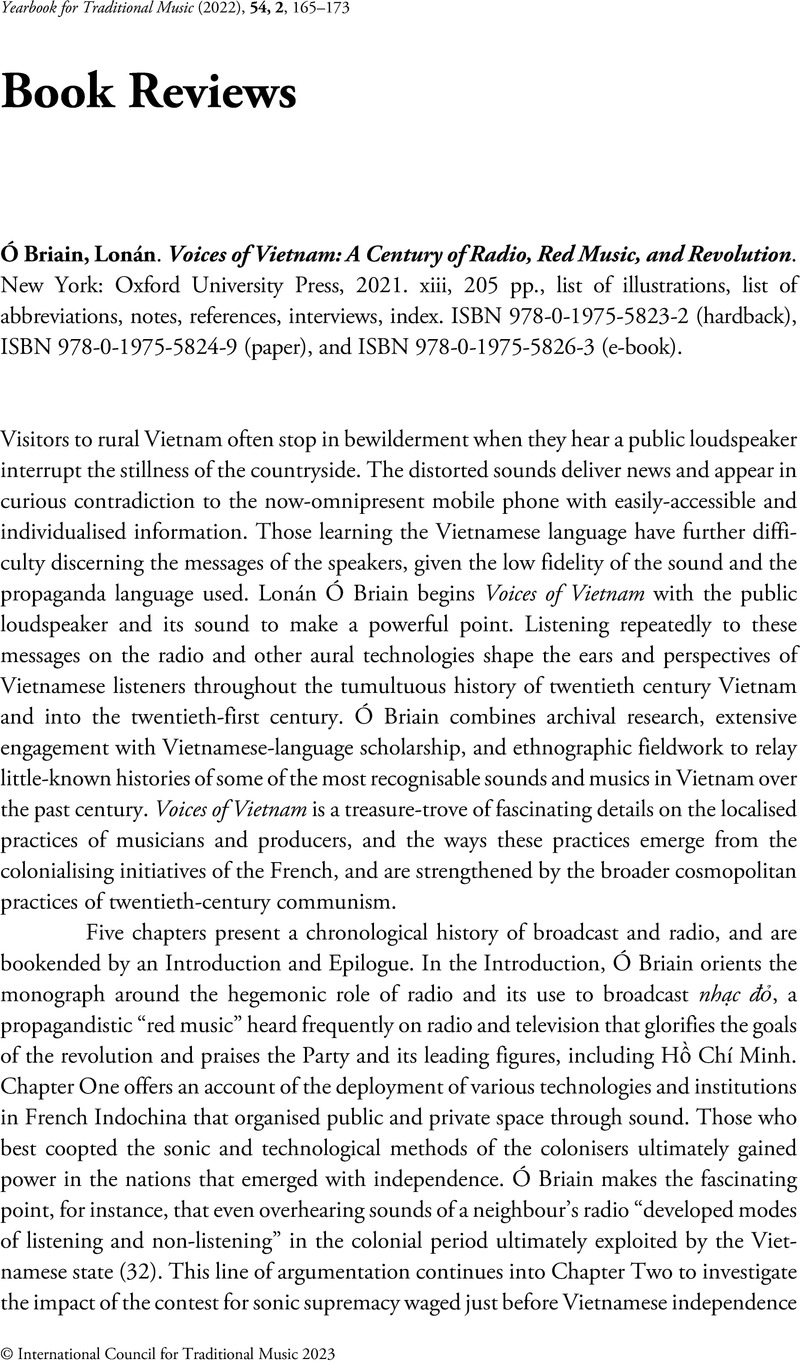No CrossRef data available.
Article contents
Lonán Ó Briain. Voices of Vietnam: A Century of Radio, Red Music, and Revolution. New York: Oxford University Press, 2021. xiii, 205 pp., list of illustrations, list of abbreviations, notes, references, interviews, index. ISBN 978-0-1975-5823-2 (hardback), ISBN 978-0-1975-5824-9 (paper), and ISBN 978-0-1975-5826-3 (e-book).
Review products
Lonán Ó Briain. Voices of Vietnam: A Century of Radio, Red Music, and Revolution. New York: Oxford University Press, 2021. xiii, 205 pp., list of illustrations, list of abbreviations, notes, references, interviews, index. ISBN 978-0-1975-5823-2 (hardback), ISBN 978-0-1975-5824-9 (paper), and ISBN 978-0-1975-5826-3 (e-book).
Published online by Cambridge University Press: 08 February 2023
Abstract
An abstract is not available for this content so a preview has been provided. Please use the Get access link above for information on how to access this content.

- Type
- Book Reviews
- Information
- Copyright
- © International Council for Traditional Music 2023


